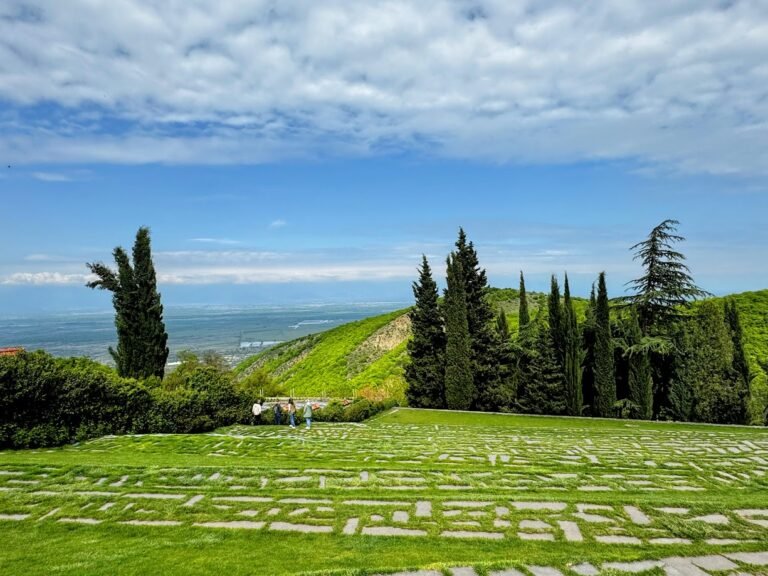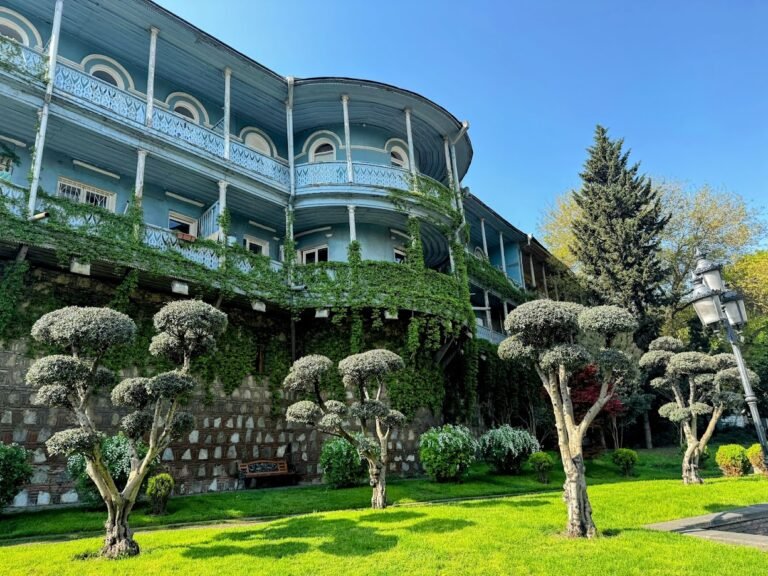For our final Georgian day trip, we chose to visit a few sites closer to Tbilisi that have some pretty remarkable historical significance and allowed us a slightly earlier finish too.
Jvari Monastery
Jvari Monastery was our first stop, which is just 12 miles from Tbilisi. The Monastery, also known as the Monastery of the Cross, is a 6th-century Georgian Orthodox church perched on a hilltop. It overlooks the confluence of the Kura and Aragvi river, as well as the town of Mtskheta.
According to tradition, in the early 4th century, the Christian missionary Saint Nino, erected a wooden cross on this site where the Monastery now stands. This act is believed to have been instrumental in the conversion of the Kingdom of Iberia (modern-day Georgia) to Christianity.
It’s a symbol of Georgia’s Christian heritage and has been a site of pilgrimage for centuries. Needless to say it attracts lots of visitors so expect some crowds. We arrived early but even then it was quite difficult to go inside and view everything. I personally preferred the panoramic views from outside of the church and just walking around the small Monastery.
TIP: Arrive as early as possible or later in the afternoon to avoid the crowds. Women must have their head and shoulders covered.
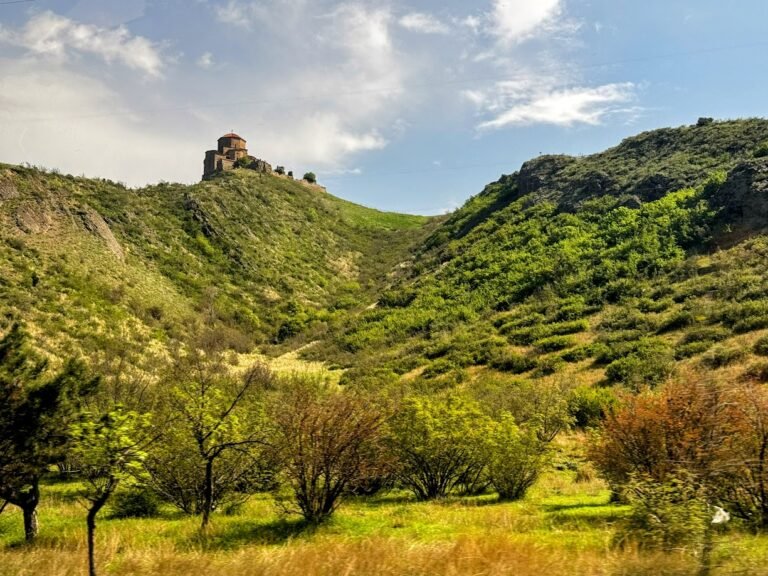
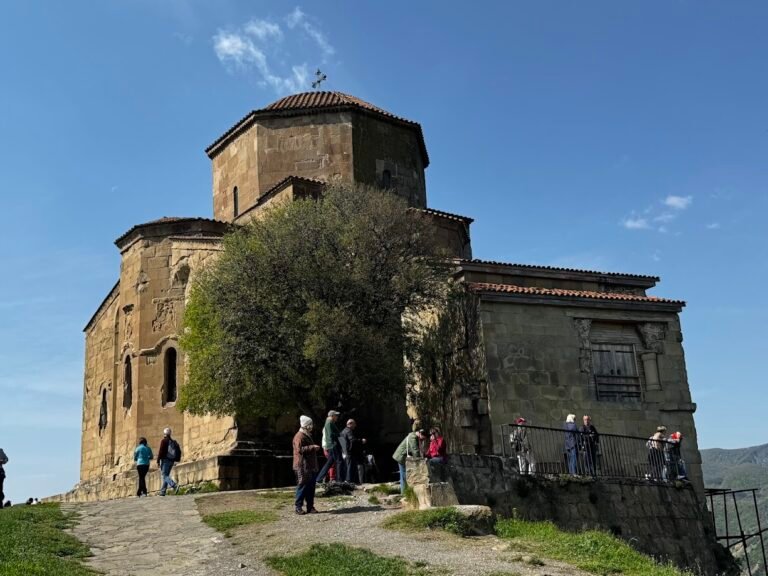
Gori
Gori was our next stop, a further 50 min drive. This historic city lies in eastern Georgia and is the fifth-largest city in the country. It’s most famously known as the birthplace of Joseph Stalin. Time in Gori can be spent exploring the Gori Fortress, which is a medieval citadel with panoramic views of the city or stopping in its most famous attraction, the Stalin Museum.
Stalin Museum
While Joseph Stalin is a very controversial historical figure, I always put my opinions aside for the sake of history. If this is what Gori is most famous for, then it’s worth exploring. Tickets are 10GEL for entrance into the museum and to see Stalin’s birth house. For an extra 5GEL you can also view his personal railway carriage.
There are guided tours inside the museum as part of your ticket costs, but we opted to just walk around and do it self-guided. That being said a lot of displays were only written in Georgian and Russian, with only the main exhibits including English translations.
I would advise using the provided English tour if you really want a more in-depth explanation of the timeline and events surrounding Stalin. What I thought was really cool to see, and has been very well preserved, was the actual house where he was born and grew up. In addition to that, the railway carriage he used (he did not like flying) is on site too, and you can go inside (with an additional ticket) and view the rooms and artifacts found in the carriage. I would say you will spend around 1-1.5 hours here.
TIP: Definitely go for the combined ticket to include the tour of his personal railway carriage. It’s only 5GEL or £1.3, so completely worth the extra cost.
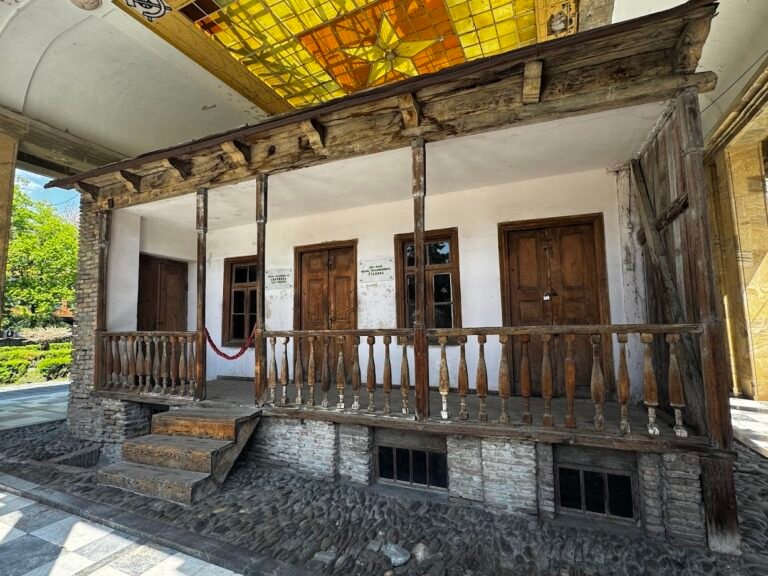
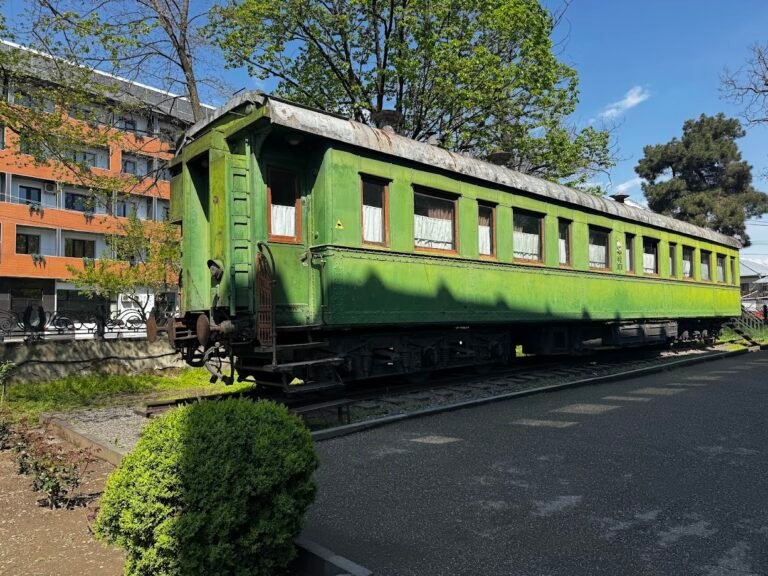
Uplistsikhe
Uplistsikhe was only a short 10-minute drive from Gori, and was hands down my favorite part of the tour. This ancient rock carved settlement is considered to be one of the oldest urban settlements in Georgia. It’s earliest traces date back to the late Bronze Age. It’s a rare example of a pagan rock city in Georgia that later adopted Christian elements.
We were given free time here to explore and ticket prices are 15GEL, or 20 GEL with some wine tasting. Walking around here does involve climbing some stairs and rocks, so I would recommend having appropriate footwear. The surfaces are uneven and steep in places so something to be mindful of before deciding to go in. I would also make sure you bring water with you. It was quite hot the day we visited, and it felt even hotter walking on these stones.
From the top, the views of valley below were incredibly beautiful, and I was just blown away at the size of this settlement that including Temples, a theatre, a Christian Basilica and even wine cellars.
At the end of the trail, we had a lovely small wine tasting, since we opted for the combined ticket, that included 3 different wines, 2 different Chachas and a few small nibbles. I mean what a bargain for only an extra 5GEL! We spent about 1 hour, which in all honesty felt a bit rushed, but that’s it how it goes on these packaged day trips. I would say that at least 1.5 hours would have been ideal.
TIP: Definitely go for the combined ticket to include the wine tasting at the end. For only an additional 5GEL or £1.3, you would kick yourself for missing this.
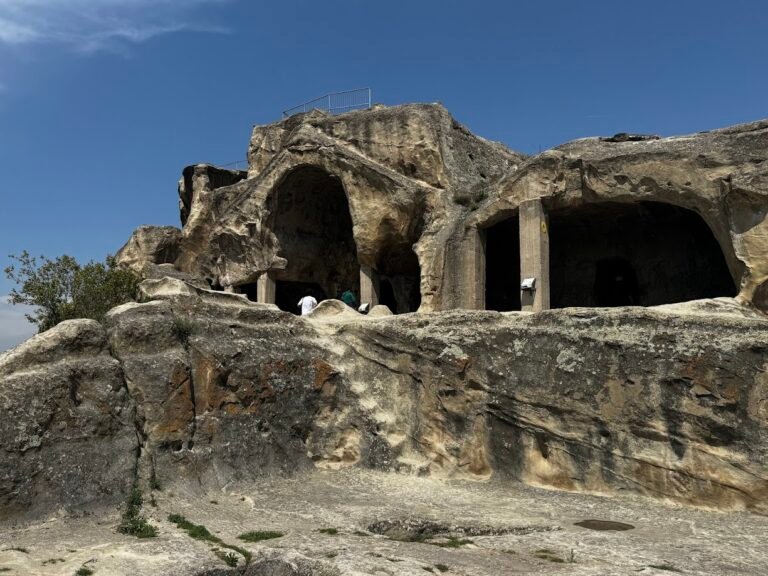
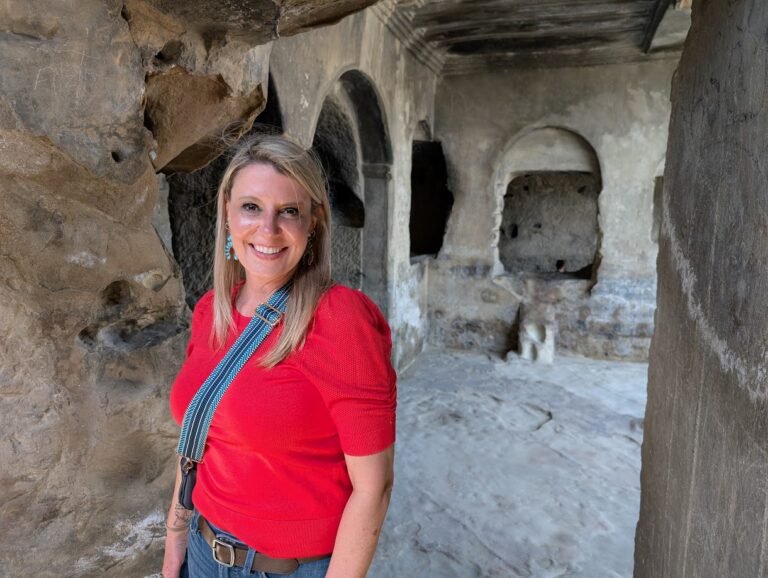
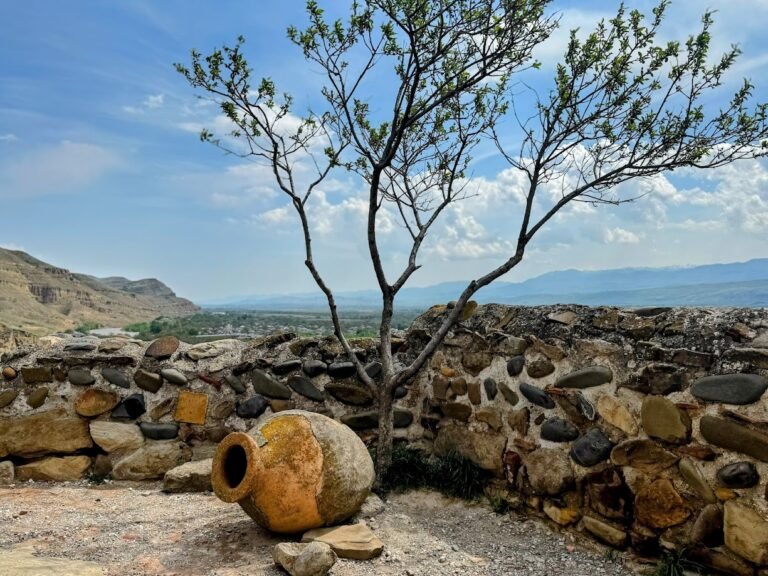
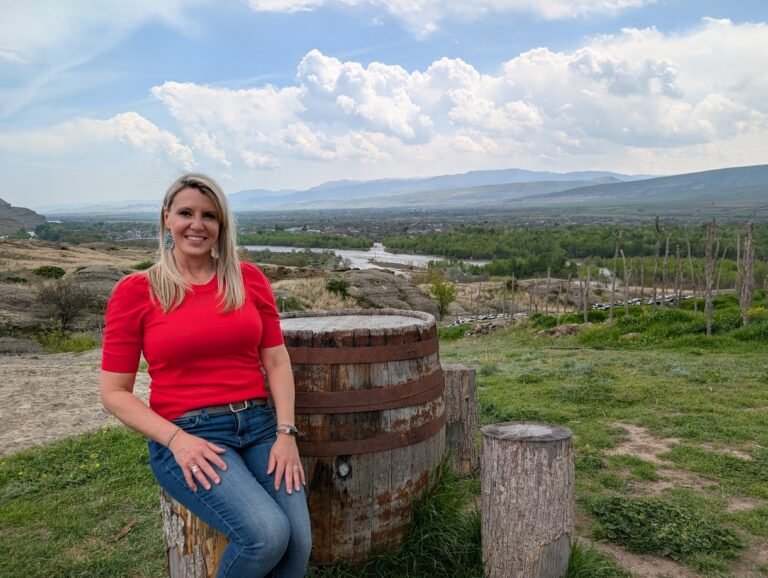
Mtskheta
Mtskheta is one of the oldest continuously inhabited cities in the world and the ancient capital of the Kingdom of Iberia, Georgia’s early monarchy. It was here in the 4th century AD, that Christianity was declared the state religion, following the work of the missionary Saint Nino. This historic act made Georgia one of the first nations to adopt Christianity, only second after Armenia.
The city was declared the “Holy City” by the Georgian Orthodox Church in 2014, as the birthplace and one of the most vibrant centers of Christianity in Georgia. Our first stop upon arrival was to visit Svetitskhoveli Cathedral.
Svetitskhoveli Cathedral
Svetitskhoveli Cathedral is one of Georgia’s most revered religious monuments, as according to Christian faith, the Holy Tunic, which Jesus Christ was dressed in before the crucifixion, was buried here beneath the cathedral’s altar.
Not only has the cathedral served as a major pilgrimage site but it was also the site for the coronation and burial of the Kings of Georgia. The inside included frescos dating back centuries, tombstones of Georgian kings, as well as the altar itself that legend says sits on top of the Holy Tunic. Again, women must cover their heads and shoulders when entering.
Unfortunately, our visit to Mtskheta was cut short due to heavy rain fall that started just as we exited the church. I was gutted not to be able to spend more time here and explore this former capital. I would suggest if visiting here is high on your list to be sure to work with your guide to ensure you get time to see this. It may mean skipping a visit to Gori, or at least the museum there.
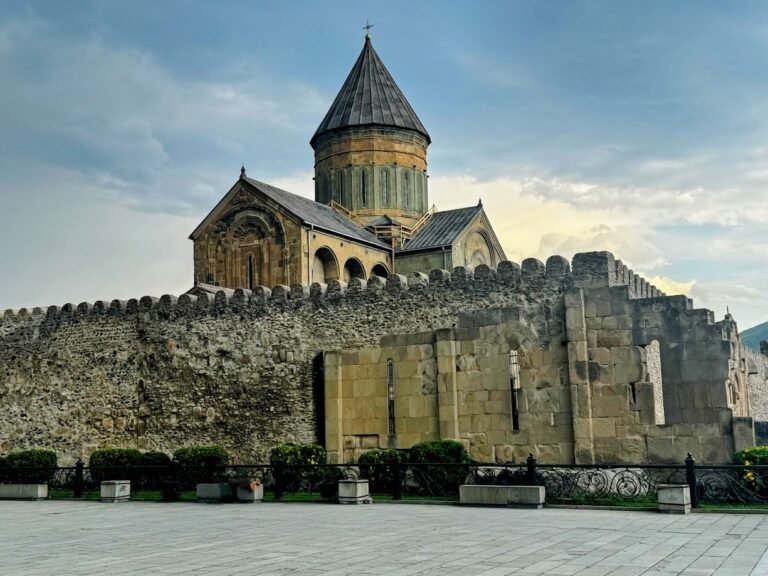
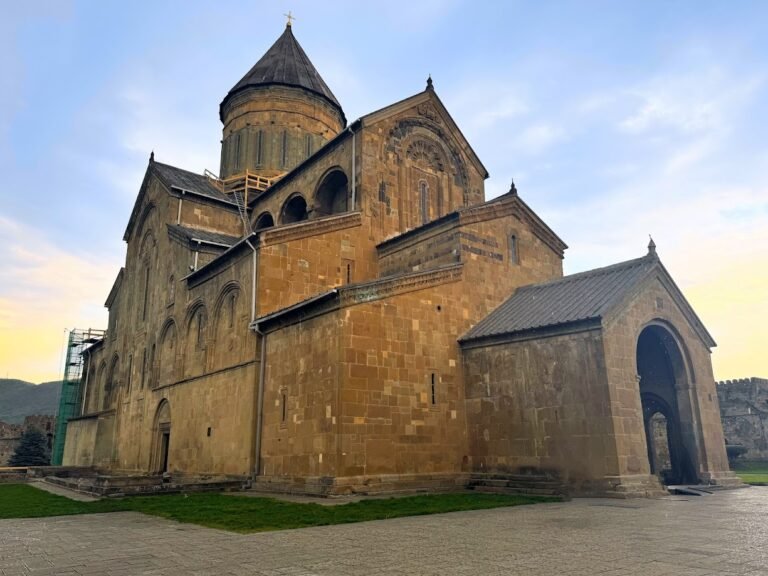
The Chronicles of Georgia
The Chronicles of Georgia was our last stop on this day tour. And boy did it deliver! The rain continued as we left Mtskheta and drove up here. But just as we arrived the sun came out and we were rewarded with a beautiful blue sky, and as an added bonus not too many other visitors.
This monument, located on Keeni Hill near the Tbilisi Sea is a stone and bronze structure, created during the Soviet era. It has 16 towering columns that depict scenes from Georgian history and biblical stories, honoring the country’s Christian heritage. It’s such an impressive site and a photographer’s dream! As you ascend the staircase to the top it’s hard not to be in awe of just how huge and dramatic this monument is. The size of these columns reminded me of the size and scale of columns found in the ancient temples of Egypt.
As you walk through the monument, behind it are some lovely panoramic views of the sea and city below. Be prepared to snap many pictures. This place is highly worth a visit, even if you don’t book this day trip. It is located a bit outside the city (25-30 mins driving) so easy to get to with a taxi if just visiting Tbilisi.
TIP: Arrive early or late in the day for the best photos and to avoid larger crowds. Would avoid using drones here due to the winds.
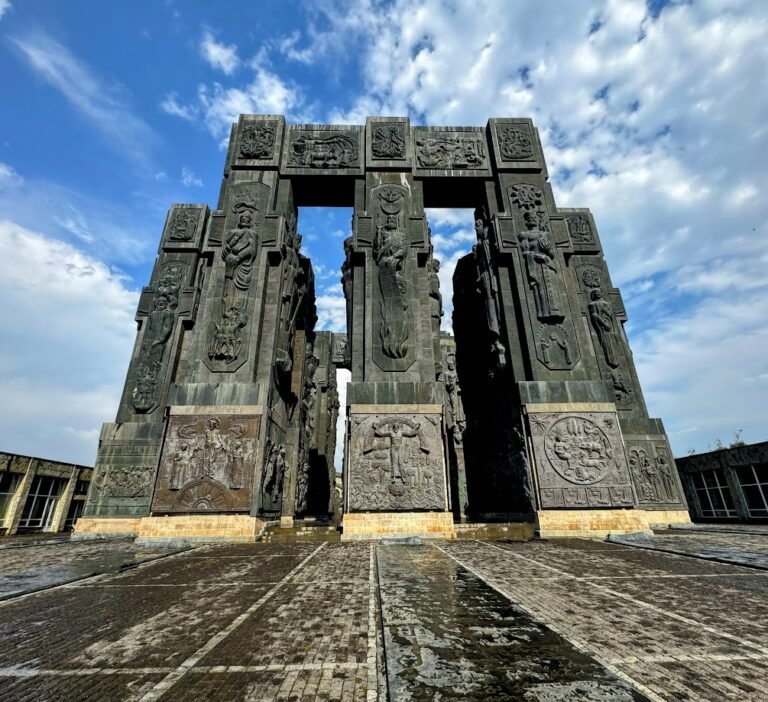
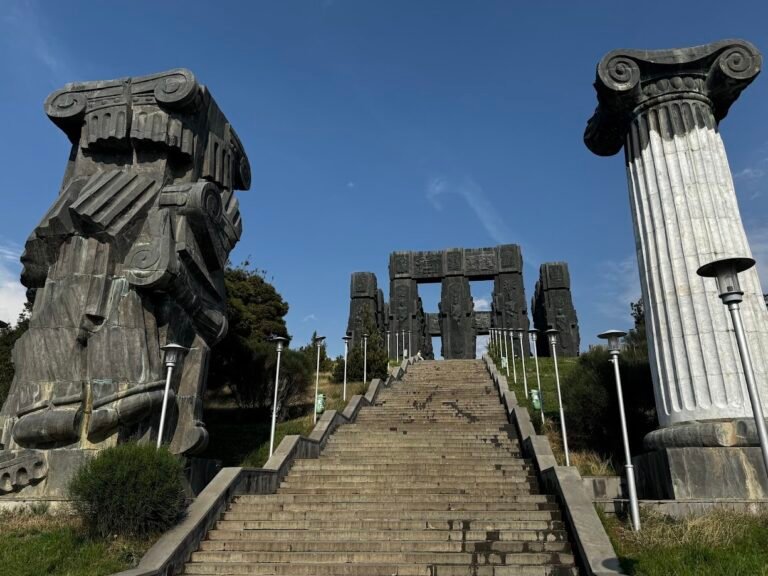
Wrap up
Another great day trip with some amazing sites. However, I think it was a bit too much to squeeze the whole itinerary into one day. We didn’t even get time to eat lunch, and we also had no time to walk around Mtskheta. While seeing the Stalin musesum was interesting, I would have skipped it for more time to see Mtskheta and maybe an additional 30 mins in Uplistsikhe. Hindsight being what it is, as this was a private tour we could have noted all these things in the beginning of the trip, but hey you live and learn and now I pass this advice on!
